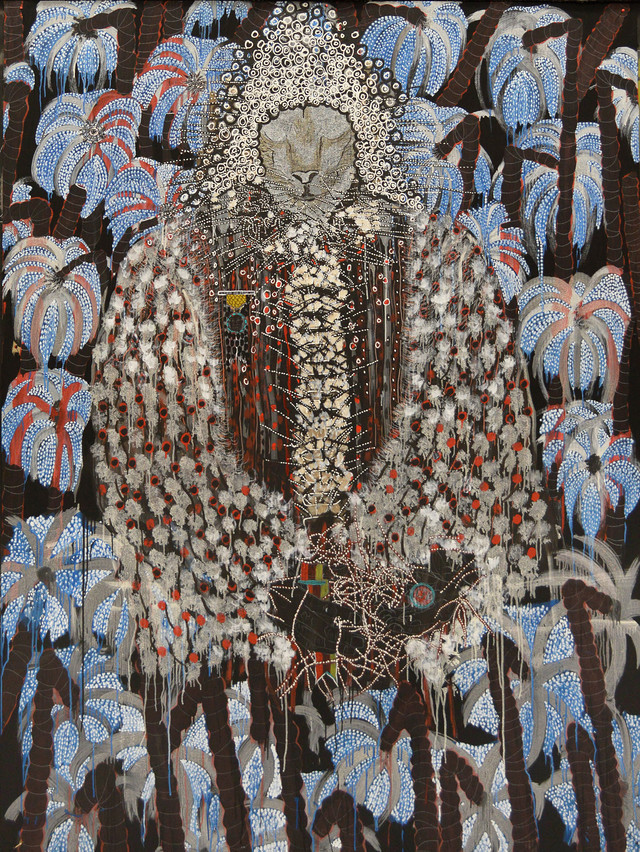Press Release
On view from January 26 to May 12, 2019, see exhibitions by artists from different global regions, Omar Ba, Shuvinai Ashoona and Alicia Henry, as they draw connections from their own histories and identities to reflect on our past, present and future.

Omar Ba, Shuvinai Ashoona, Alicia Henry, Winter Season
The Power Plant, Toronto (Canada)
26.01 - 12.05.2019


© ArtCatalyse International / Marika Prévosto 2019. All Rights Reserved
Omar Ba , Same Dream
Curator: Nabila Abdel Nabi, Associate Curator
Omar Ba’s works confronts us with some of the most urgent issues of our present—from the growing inequality of wealth and power across society to questions around immigration, post-
In conversation with the dictator series, the exhibition also presents works that speak to his affinity for portraying the strength of the human spirit—depictions of youth who, regardless of where they are, share some of the same dreams and desires for the future.
Ba’s practice sprang from painting on walls in Dakar, and he has continued working in this mode within the gallery context using everyday materials, ubiquitous in his surroundings. For the exhibition at The Power Plant, Ba has developed a new large-
Same Dream is Omar Ba’s first institutional solo exhibition.
Shuvinai Ashoona, Mapping Worlds
Guest Curator: Nancy Campbell, PhD
Assistant Curator: Justine Kohleal, RBC Curatorial Fellow 2018-
The exhibition Mapping Worlds features pencil crayon and ink drawings produced by Shuvinai Ashoona over the past two decades. Many of Shuvinai’s early drawings depict scenes of Kinngait (formerly known as Cape Dorset, in Nunavut), continuing an artistic tradition begun by the Ashoona family, including her grandmother Pitseolak Ashoona (1904-
Shuvinai’s work is unique among the artists working in Kinngait. She is best known for her highly personal and imaginative iconography, with imagery ranging from closely observed naturalistic scenes of her Arctic home to monstrous and fantastical visions. Her drawings imagine the past and present fused into a prophetic future such as human-
Today, television shows like The Walking Dead (2010–present) stimulate our fears of the unknown, the monstrous and the "Other" in a manner that risks increasing our xenophobia and provoking violence. Shuvinai’s work speaks to these current anxieties, yet her artwork does not depict humans in opposition to the otherworldly. By appropriating images that reflect her fascination with horror films, comic books and television, Ashoona merges different imagery with everyday narratives to redraw the map of the boundaries between reality and fantasy, past and future.
Alicia Henry, Witnessing
Guest Curator: Daina Augaitis
For the last two decades, Alicia Henry has been exploring unconventional approaches to portraiture, using the face to represent something that is hidden, revealed and performed. Originally from Illinois, Henry has lived for the past 20 years in Nashville, TN, where she is an artist and professor of art.
Henry creates two-
In this, her first Canadian exhibition, Henry’s compelling compositions are drawn from a multitude of references: the artist’s own memories, her collection of West African masks and events on the street or on television, to name but a few. Imbued with her perspective as an African American woman, the figures assert themselves as timeless witnesses embodying the impact of personal and social histories.
In a recent conversation about her practice, Henry explained that she does not view her work as political, but nonetheless acknowledges that “at this time in the United States, the brown body has become politicized.” In her installations, composed primarily of dark-
Witnessing is Alicia Henry’s first solo exhibition in Canada.
Omar Ba, Afrique, Pillage, Arbres, Richesses, 2014. Oil, gouache, ink and pencil on corrugated carton, 199 x 150 cm. Copyright the artist. Image courtesy the artist and Hales Gallery.
